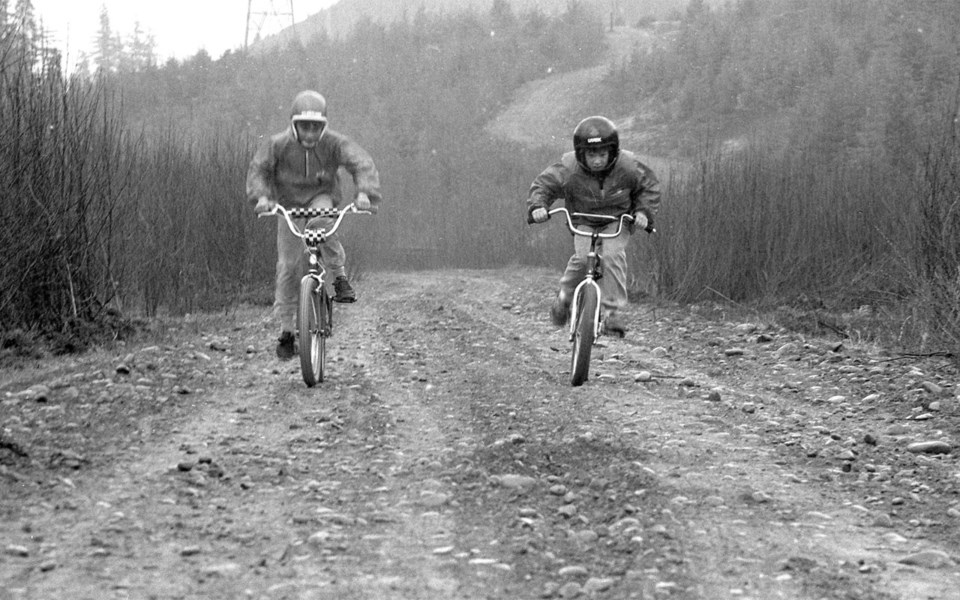Over the past week, the Whistler Museum hosted various events as part of our fourth annual Mountain Bike Heritage Week, including a Post-Toonie Retro Bike Show & Shine, a bike maintenance course, a film screening of Ride to the Hills, and talks on the Cheakamus Challenge and bike manufacturing in Whistler. We'd like to thank everyone who helped with this year's Mountain Bike Heritage week and all of our amazing sponsors. With all of this going on, it's no surprise that biking got a little stuck in our heads.
Usually when we discuss the history of mountain biking, we look at events, races and the growing popularity of the sport. Reading through press clippings from the Squamish Citizen and the Whistler Question from '80s, however, a large portion of the reporting on biking covers accidents, injuries and growing concerns for safety.
A July 1986 article in the Squamish Citizen reported on two separate accidents two days apart, both of which caused serious injuries. In one, a Whistler resident and a Maple Ridge resident collided on the bike path along Nita Lake, resulting in a broken hand and possible concussion for the Maple Ridge resident. The other claimed that a resident of North Vancouver "lost control of her rented bicycle and careened into a tree," causing a broken leg and another possible concussion. Both injured parties were transported to Vancouver.
The RCMP received many complaints of bikers not following the rules of the road and particularly urged riders to carry lights when riding in the dark. In June 1987, a cyclist was reported to have struck an unidentified object while riding on Highway 99 and was transported to Vancouver for surgery for severe facial injuries. In an effort to encourage the use of lights, the RCMP began ticketing cyclists who didn't have any, many of whom were shocked to receive a $75 fine.
By May 1987, it would seem bike accidents were so numerous in Whistler that the Whistler Ambulance Chief Jeff Sopel made a statement appealing to cyclists to "use common sense when using the Valley Trail." Part of his appeal included a call to wear helmets and to be aware of their location in case an ambulance had to be called.
The Whistler Medical Clinic, then located in the basement of Municipal Hall, saw quite a bit of business from cyclists over the summer of 1987. Dr. Ron Stanley collected data from all the bicycle accidents that passed through the clinic between May and September and found that about 50 per cent of the accidents resulted in road lacerations or abrasions (also described as "Road rash—very painful"), 30 per cent caused head and/or facial injuries, 15 per cent resulted in fractures of some kind, 15 per cent of the injuries were serious enough to require a transfer to Vancouver, and 15 per cent of the accidents occurred while the rider was drunk or impaired.
According to Dr. Stanley, there was no obvious pattern to the incidents, which occurred all over Whistler on both roads and trails. He echoed Sopel's call, urging riders to use common sense and wear helmets, also adding that wearing adequate clothing (such as shirts, shoes and gloves) would help prevent road rash and noted that the majority of serious injuries occurred when the rider was impaired.
Mountain biking as a sport, and bike safety, have come a long way in the decades since the 1980s (as has the Whistler Medical Clinic, which moved out of the basement and into its current facility in 1994). One thing we've learned from talking about biking all week, however, is that the advice of Sopel and Dr. Stanley still applies today: use common sense and wear your helmet.




